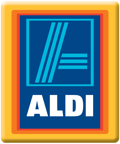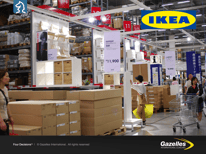Are high prices or low prices better for the profit and the survival of a company?
Where is a company’s optimal price position?
 In Confessions of the Pricing Man: How Price Affects Everything by Hermann Simon, offers great insights into pricing, sharing companies that have achieved great profits using pricing as part of their strategy.
In Confessions of the Pricing Man: How Price Affects Everything by Hermann Simon, offers great insights into pricing, sharing companies that have achieved great profits using pricing as part of their strategy.
Who is Hermann Simon? Simon authored Hidden Champions - Lessons from 500 of the world's best unknown companies. He’s also chairman of Simon-Kucher & Partners. Simon-Kucher & Partners is widely considered to be the global market leader in the specialized area of price.
This blog focuses on low price companies and how they achieve remarkable success. Most of the thoughts here are distilled from Simons book, Pricing Man: How Price Affects Everything. To learn more in depth about pricing, two recommendations: Pick up the book and/or attend Fortune Sponsored Growth Summit, October 25-26, 2016 Dallas, Texas. Simon will be a featured speaker.
Pricing is Strategic
Whether a company selects a high-price or low-price positioning is one of its most fundamental strategic decisions. The founders of the company frequently make the call. It’s an important consideration. Why? For many reasons a company’s chances of changing course later on are limited. If you’re starting a business play close attention to this.
The choice of the price position affects the overall business model, the product quality, branding, and the company’s innovation activities. It also determines which market segments the company will serve and what channels it will use to reach them.
One can run a successful business with either low prices or high prices; the success factors in each case, however, are very different. Let’s begin with the more surprising of the two options: spectacular success stories with low prices.
Low Price Examples
Aldi -  One of the world’s most successful retailers, Aldi is expanding internationally for years. At the end of 2014, Aldi operated more than 10,500 stores worldwide, including 1,300 in 32 US states. Its plan is to increase its US footprint by 50 % by 2018. Aldi owns Trader Joe’s as well. Trader Joe’s competes against higher end food and grocery retailers such as Whole Foods. Trader Joe’s enjoys a cult following. It’s interesting that Aldi ’s core strategy is quite the opposite, yet simple: offer an acceptable level of quality at very competitive prices. Its assortment consists almost entirely of private-label products whose prices undercut popular brand -name products by 20–40%. Here’s the most fascinating part of their pricing strategy. Aldi achieves significantly higher returns than food and grocery chains who command higher price positions.
One of the world’s most successful retailers, Aldi is expanding internationally for years. At the end of 2014, Aldi operated more than 10,500 stores worldwide, including 1,300 in 32 US states. Its plan is to increase its US footprint by 50 % by 2018. Aldi owns Trader Joe’s as well. Trader Joe’s competes against higher end food and grocery retailers such as Whole Foods. Trader Joe’s enjoys a cult following. It’s interesting that Aldi ’s core strategy is quite the opposite, yet simple: offer an acceptable level of quality at very competitive prices. Its assortment consists almost entirely of private-label products whose prices undercut popular brand -name products by 20–40%. Here’s the most fascinating part of their pricing strategy. Aldi achieves significantly higher returns than food and grocery chains who command higher price positions.
How can that be?
Three reasons explain why Aldi’s return on sales being more than double the returns of a traditional supermarket:
- higher efficiency
- lower costs
- capital management
The gross return per square meter of floor space is 30.3 % higher in Aldi than in a supermarket. Personnel costs alone save Aldi the equivalent of 8.2 % of sales. Aldi puts bar codes on all sides of its packages, so that the cashiers do not need to search for the code to scan. Aldi also saves costs in procurement, where its enormous volume —combined with its negotiation skills—enables it to win favorable prices from its suppliers.
Aldi turns its inventory over almost three times as fast as a traditional supermarket. Inventory in their system spend far less time at a warehouse or on a store shelf. Aldi gets its money quickly, but pays its suppliers much later, and invests this so-called float to earn short-term interest.
Aldi uses a very aggressive low-price strategy to earn consistently higher returns than the rest of the sector. Simon shares this recent data: Aldi Süd (one of the two Aldi operating units) had a pretax return on sales of 5.0 % and an after-tax return of 3.7 %. The comparable numbers for its counterpart Aldi Nord were 3.5 and 3.0 %.3 The profits from Aldi have made its founders extremely wealthy. For years, Karl Albrecht and his late brother Theo ranked among the world’s wealthiest people. They and their descendants had a combined fortune estimated at over $44 billion
 IKEA - Another of the world’s most successful retailers. Simon provides the following trends and numbers: In 2011 IKEA cut its already low prices by another 2.6 %. In 2013 it “continued to lower prices on some of its best-selling items” and it cut prices overall by 0.2 %. Despite this ongoing price-cut strategy, IKEA’s revenue grew by 3.1 % to $36.2 billion in 2013 and its net profit likewise by 3.1 % to $4.2 billion. This corresponds to a return on sales of 11.6 %, a very high number for a retailer. One analyst commented: “A key contributor were aggressive price investments (new lower pricing strategy) on top selling products.” IKEA, a Swedish company focuses all of its activities on achieving the maximum cost efficiencies. They offer such low prices because of its extremely high procurement volumes, its use of lower cost materials, and its “do-it-yourself” model. Customers pick up and assemble the furniture themselves.
IKEA - Another of the world’s most successful retailers. Simon provides the following trends and numbers: In 2011 IKEA cut its already low prices by another 2.6 %. In 2013 it “continued to lower prices on some of its best-selling items” and it cut prices overall by 0.2 %. Despite this ongoing price-cut strategy, IKEA’s revenue grew by 3.1 % to $36.2 billion in 2013 and its net profit likewise by 3.1 % to $4.2 billion. This corresponds to a return on sales of 11.6 %, a very high number for a retailer. One analyst commented: “A key contributor were aggressive price investments (new lower pricing strategy) on top selling products.” IKEA, a Swedish company focuses all of its activities on achieving the maximum cost efficiencies. They offer such low prices because of its extremely high procurement volumes, its use of lower cost materials, and its “do-it-yourself” model. Customers pick up and assemble the furniture themselves.
H&M and Zara - I have no familiarity with these two companies. They have similar strategies to Aldi, Ikea and Walmart. Let me share Simon’s insights: The fashion retailers H&M and Zara have a similar cost strategy to IKEA’s. H&M has around 3,000 stores and Zara has 5,500. H&M has revenues of roughly $19.3 billion and an after-tax profit of $3.6 billion, which works out to a return on sales of about 13.3 %.6 Zara’s profit margin is practically the same. Like IKEA, Aldi, and Walmart, the name of the game at H&M and Zara is “efficiency.” These companies do nothing unless it is absolutely required by the consumer. All of their activities are trimmed and slimmed to achieve the highest efficiency. This is particularly true for their logistics processes, which ensure that the companies can time their new product lines to reflect prevailing customer tastes, and can order the right amount of goods to avoid unsold inventory when tastes shift again. This extreme precision, speed, and efficiency make them very profitable despite low prices.
What can you learn from these company’s low price practices? Perhaps that it’s difficult to achieve success without a solid strategy. Price changes are high-stakes decisions with dramatic consequences when they go wrong. Example: Several years ago shares in Best Buy fell by almost 30% the day after the news about the holiday sales broke. This catastrophic, nationwide effect on customer and shareholder opinion is why managers will keep their hands off the pricing lever if they have doubt, turning their attention to something more tangible and more certain: cost management. Cost management involves internal matters and supplier relationships, which managers generally feel are less sensitive and easier to handle than their customer relations.
Pricing Strategy is one of many pieces of your company’s overall strategy. The result of getting your strategy right top line revenue growth. We’ll be exploring Strategy along with the other Four Decisions that drive growth (People, Execution and Cash) at our Scaling Up Business Growth Workshop Cedar Rapids, IA, Wednesday, November 2nd at The Hotel Kirkwood Center. Plan to attend to make 2017 your best year ever.
We’ll explore more from Confessions of the Pricing Man: How Price Affects Everything next blog.






.jpeg?width=150&height=135&name=Hand%20with%20marker%20writing%20the%20question%20Whats%20Next_%20(1).jpeg)

